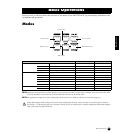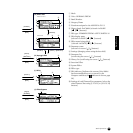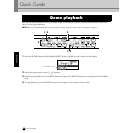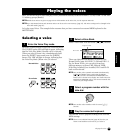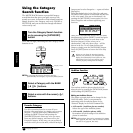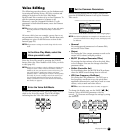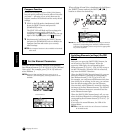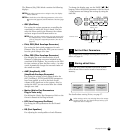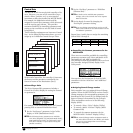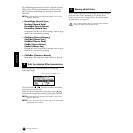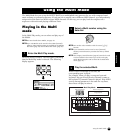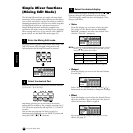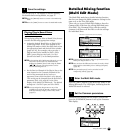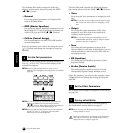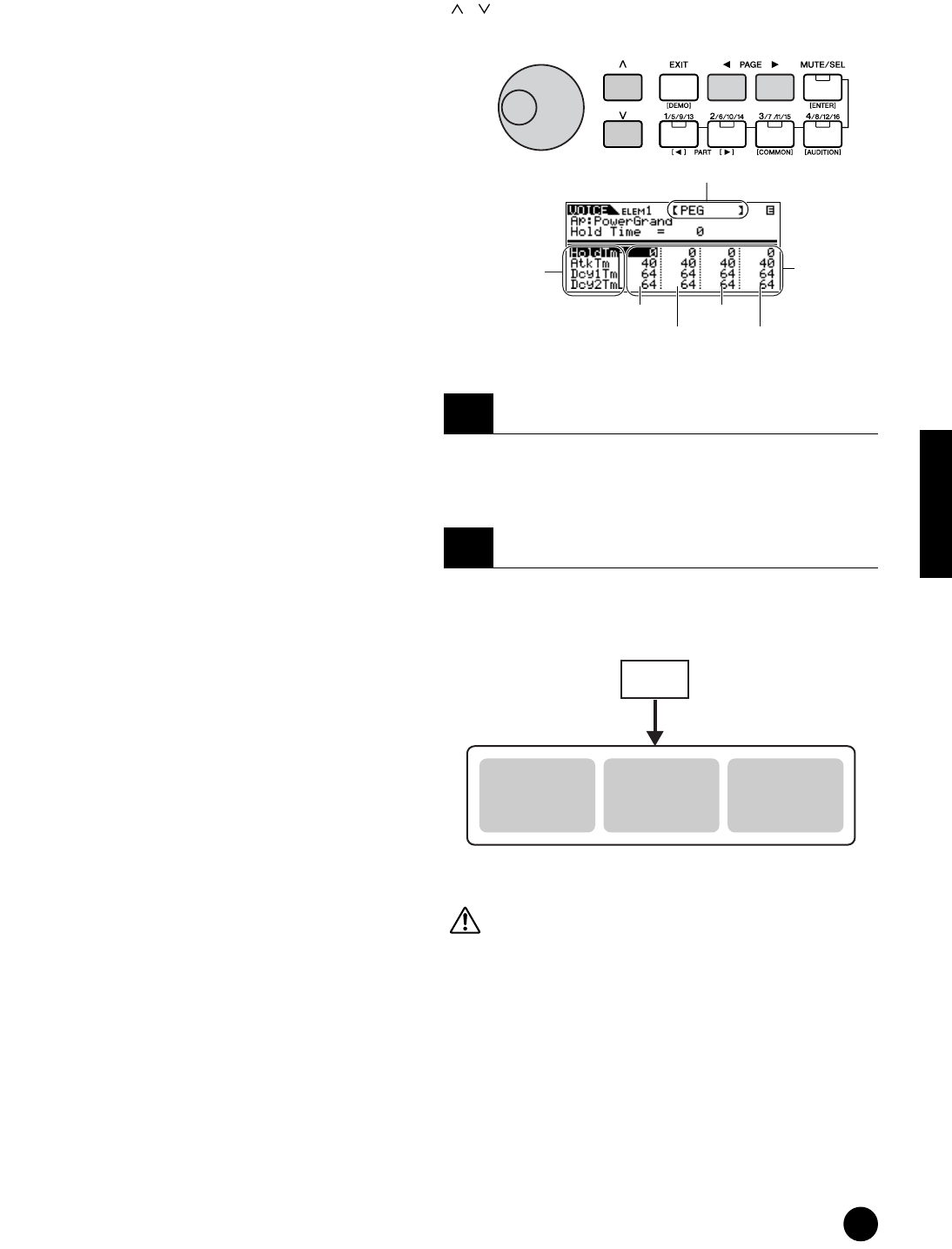
39
Quick Guide
Playing the voices
The Element (Key) Edit Mode contains the following
displays.
n If you select a Drum voice or Plug-in voice, the display
will be different.
n For details about the following parameters, refer to the
Basics Section (page 26) and the Reference Section (page
59)
• OSC (Oscillator)
For setting the various parameters controlling the
waveforms on which the Voice is based. You can
select the Wave used for the Element, the volume
and note range of each Element and so on.
n When you select a Drum Voice, you can output each
key independently via the ASSIGNABLE OUTPUT
jacks by using the OutputSel parameter (No. 96, on
page 67).
• Pitch, PEG (Pitch Envelope Generator)
For setting the basic pitch parameters for each
Element. Also, by setting the PEG, you can control
how the pitch changes over time.
• Filter, FEG (Filter Envelope Generator)
For changing the tonal characteristics of each
Element, by adjusting overtones included in the
waveform of the Element. You can also set the FEG
for time variance of how the filter works— in other
words, dynamically change the tone and timbre of
the sound over time.
• AMP (Amplitude), AEG
(Amplitude Envelope Generator)
For setting the volume of each Element after the
OSC (Oscillator), PITCH and FILTER parameters
have been applied, as well as the final overall
volume of the signal sent to the outputs. Also, by
setting the AEG, you can control how the volume
changes over time.
• Native (Native Part Parameters:
Plug-in Voice only)
For editing the Native Part Parameters. Refer to the
Owner’s manual of the Plug-in Board.
• LFO (Low Frequency Oscillator)
For setting the LFO parameters for the Normal
Voices.
• EQ (Part Equalizer)
For adjusting the tonal qualities of each Element.
To change the display page, use the PAGE [
EE
EE
][
FF
FF
]
buttons. Select the desired parameter with the cursor
[][] buttons and change the settings by using the
data dial.
For an application example showing how to use the
effect, see page 41.
Up to 256 new/edited Normal Voices and 32 new/
edited Drum Voices can be stored to internal user
memory.
For details about storing Voices, see page 57.
When storing a Voice, any existing data at the storage
location will be lost. You should always back up your
important data to computer.
5
Set the Effect Parameters.
6
Storing edited Voice.
Element 1 Element 3
Element 2 Element 4
Display name
Parameter name
Settings
Normal Voice
USER1 (USR1)
1-128
Voice
Store
Normal Voice
USER2 (USR2)
1-128
Drum Voice
USER DRUM
1-32



